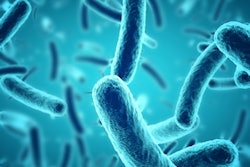Wednesday, November 30 | 9:00 a.m.-9:30 a.m. | W2-QI-7HC | Learning Center -- QI DPS
This scientific poster will showcase the high performance of a cloud-based software application for automatic inline analysis of images.Ameena Elahi of the University of Pennsylvania will present the findings of a proof-of-principle research project that demonstrates the potential for using machine learning to automatically obtain quantitative data from multiple different CT scanners.
In radiology clinical practice, a barrier to the use of artificial intelligence (AI) algorithms for image annotation and determination of imaging-derived phenotypes (IDPs) is integrating the technology with different scanners, PACS, and radiologists "in the loop," according to the researchers.
To help, the team developed a machine-learning algorithm to automatically report hepatic and abdominal fat imaging phenotypes and integrated these results in order to intercept, analyze, and quantify imaging-derived phenotypes from abdominal CT prior to physician review.
The presentation will detail the "end-to-end pipeline workflow" that begins after the CT technologist completes the study and sends the images from the scanner to PACS. It will also further show the processes that result in outputs of AI images to PACS, explaining the method's limitations as well as how it performed in tests conducted during peak periods at a tertiary care radiology practice.
"It was feasible to receive and analyze studies inline during high traffic periods," the authors wrote.
Delve further into their findings by viewing this poster.



















